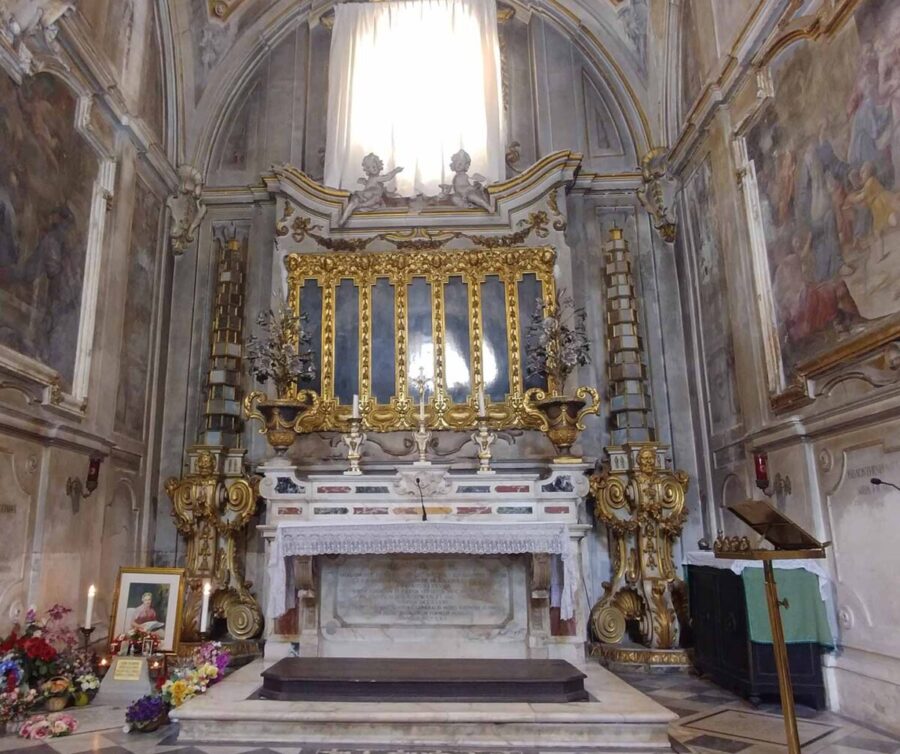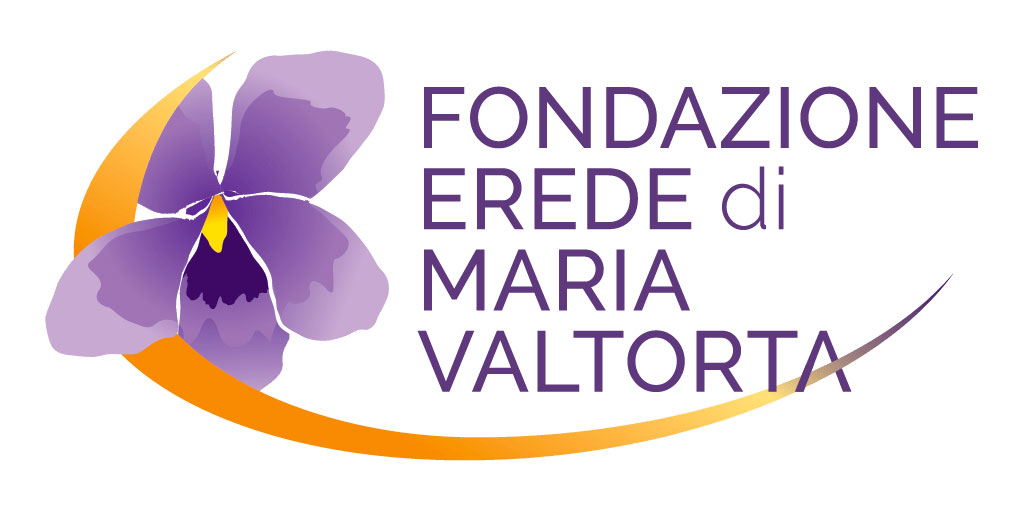Maria Valtorta is buried in Florence.
The city she loved so much, and where she treated the wounded soldiers of the First World War, welcomed her mortal remains, which were interred in the Ss. Annunziata.
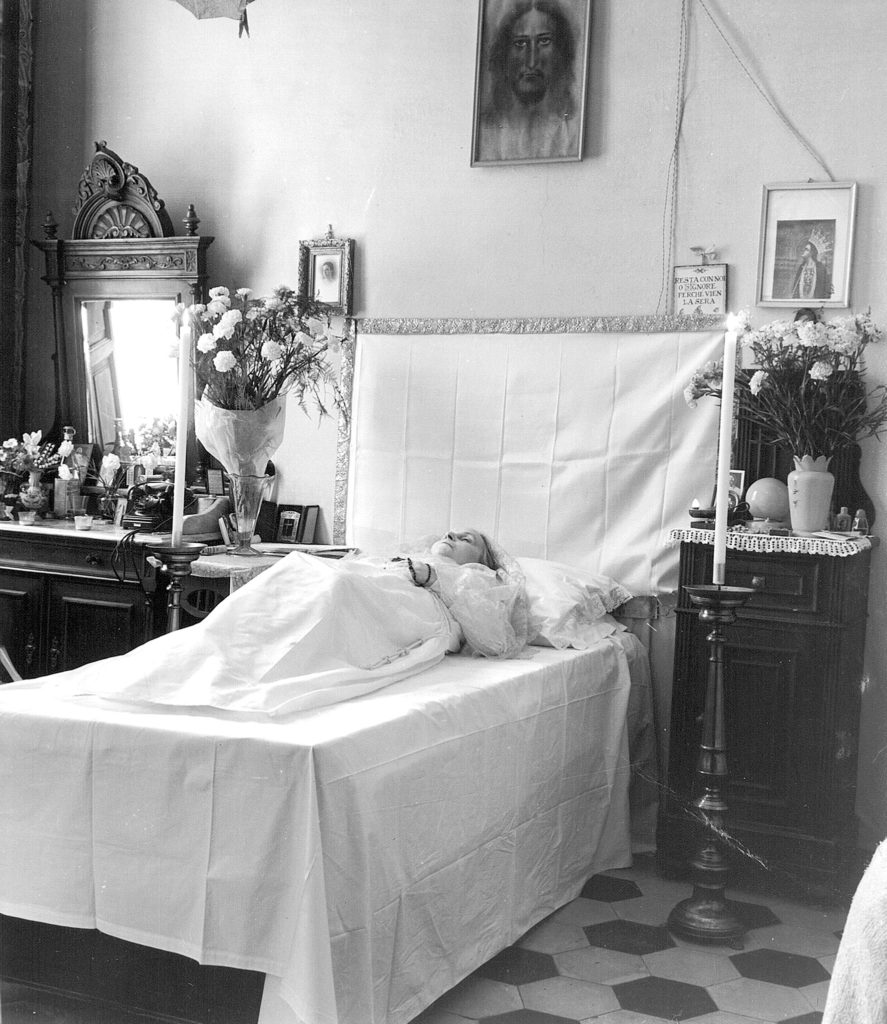
MARIA VALTORTA DIED ON OCTOBER 12, 1961
Maria Valtorta died on the morning of October 12, Thursday, at the same instant in which the priest who was assisting her, reciting the ritual prayer for the dying, came to say the words: “Leave, Christian soul, from this world”. It just seemed like an extreme act of obedience. She was 64 years of age and had been in bed for 27 and a half years.
Jesus had said to her, many years earlier: “How happy you will be when you realise that you are in my world forever and that you have come there, from the poor world, without even realising it, passing from a vision to reality, like a little one who dreams his mother and wakes up in her mother’s harms holding him close to her heart. So I will do with you ”.
The body was composed in his room and on the same bed. The slightly pinkish whiteness of the right hand, in contrast with the bruised fingers of the left, seemed to enhance the sublimity of her writings. The knees that remained arched under the white robe expressed the hardness of her desk.
Her wish was respected, which she had expressed in time, to have the funeral early in the morning (it took place on Saturday 14 October) and to be buried in the earth. Sobriety and concealment to the last.

From 14 October 1961, the day of the burial, until 12 October 1971, the day of the exhumation, the remains of Maria Valtorta rested at no. 127 of Field B.
Since 15 October 1971, the mortal remains of Maria Valtorta, lovingly placed after the recognition and careful scientific treatment, have been kept in the same niche that contains those of her parents, in the Galleria del Redentore.

MARIA VALTORTA BURIED IN FLORENCE
On the morning of last July 2, therefore, in the presence of a few close friends, a priest, and the people necessarily in charge of these tasks, the tomb of the Valtorta Family was reopened in the Viareggio cemetery, to be taken the metal box containing the Bones of Mary.
After the ritual checks, the precious luggage, wrapped in a cloth, was placed in a private car, where they took place: Marta Diciotti, Father Gabriele M. Roschini o.s.m., the publisher Emilio Pisani and Mrs Claudia, his wife. Four members of the Mencarini-Antonini family followed in another car – the only escort – the people who, after Marta Diciotti, were the closest to the sick writer from Viareggio.
Before taking the highway to Florence, the very short procession deliberately diverted towards the city center, took Via Fratti and, solemnly anonymous in the grip of intense traffic, stopped for a few moments (the time allowed by the red traffic light) in front of the «House». A gesture of homage, of begged blessing, of extreme confidence, before total detachment …
We arrived in Florence at around 11 am, welcomed by our friend Fiorillo in the lively and oblivious Piazza della Ss. Annunziata. The box was devoutly carried, through the beautiful Cloister, to the Chapter Chapel, where a representative of the Community of the Servants of Mary – whose Prior, Father Alessandrini, had met in the Cloister, awaited – and Father Corrado M. Berti osm, arrived from Rome.

Shortly after, the Holy Mass began, concelebrated by three served Fathers; Gabriele M. Roschini, Corrado M. Berti, Celestino M. Bresci.
At the end of the rite, Father Roschini, who had presided over the concelebration, gave a speech which, although improvised (since it was requested at the last moment by the prior father), proved to be worthy of the orator, pious priest and authoritative man of science, recently struck by the Valtortian writings to the point of becoming, in a few months, a profound connoisseur.
Father Roschini began by recalling, with reference to the intimate nature of the ceremony that was taking place, the aura of silence and solitude that has always enveloped the greatest events: such as the Annunciation, like the Nativity of the Lord. He touched on some aspects of Maria Valtorta’s spirituality, referring in particular to Marian devotion. He paused to consider the high and decisive mission of Valtortian writings in the troubled contemporary world. He defined July 2, 1973 as “a historic date” for the Church, for the city of Florence, for the Order of the Servants of Mary, for the whole world.
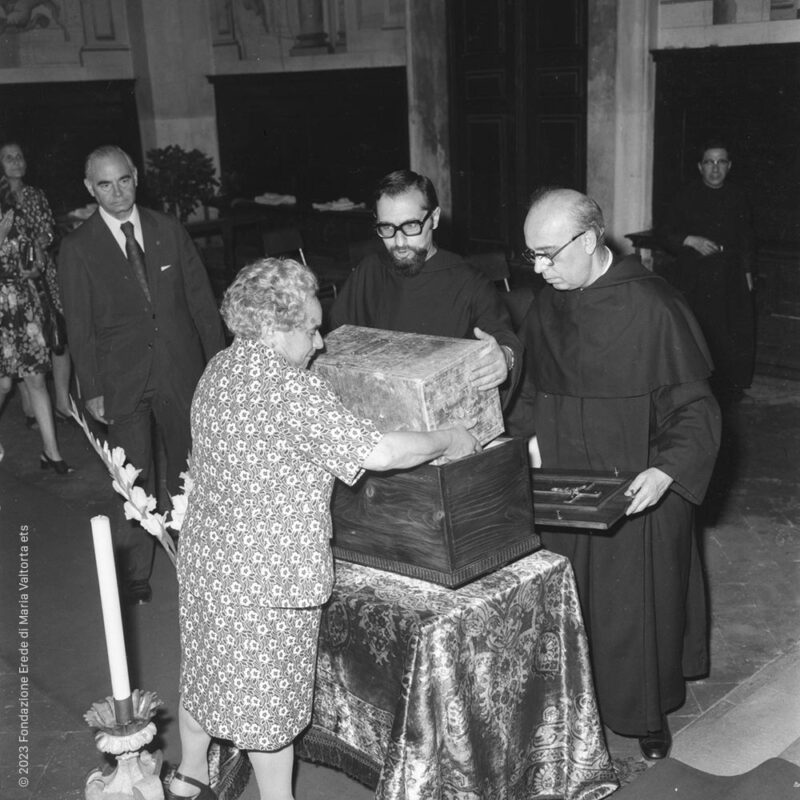

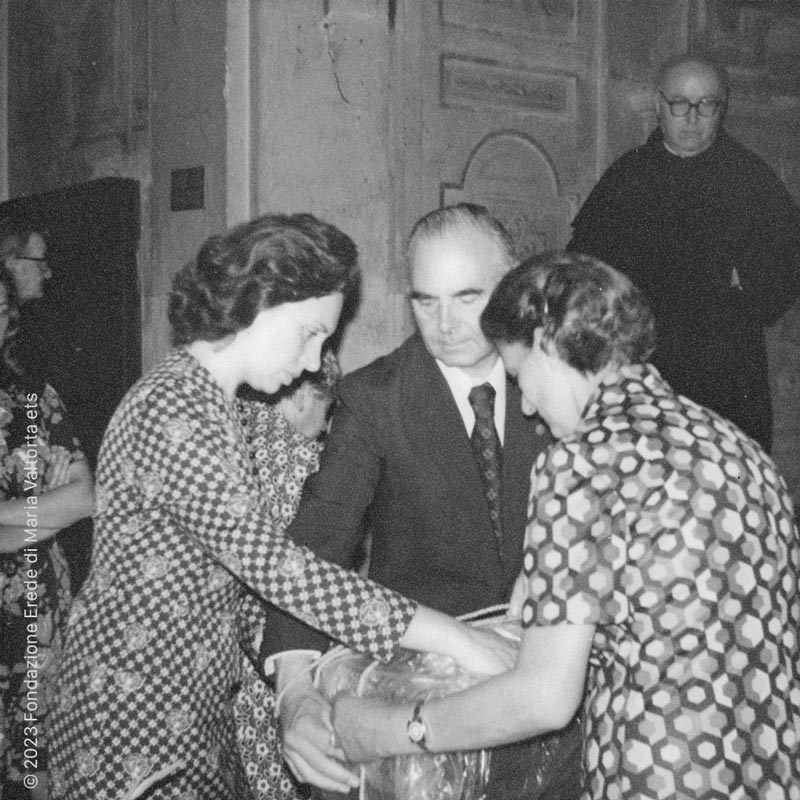
After the blessing to the small coffin (the metal box brought from Viareggio had been inserted into a wooden box, set up in Florence) and to the sepulchral pit, the dear Remains were lowered to their final home, accompanied by a parchment with the signatures of all those present, but even more by Marta’s moving words of farewell and by the silent unanimous prayer.

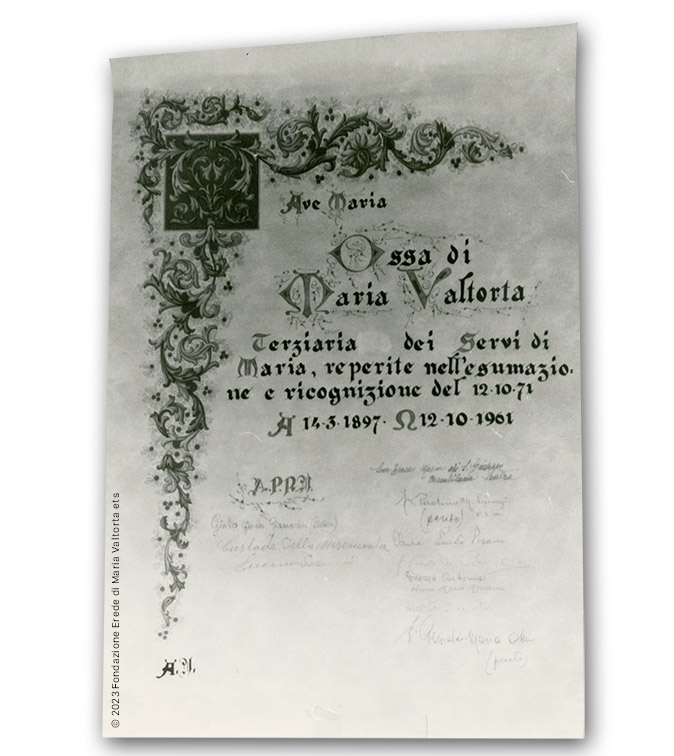


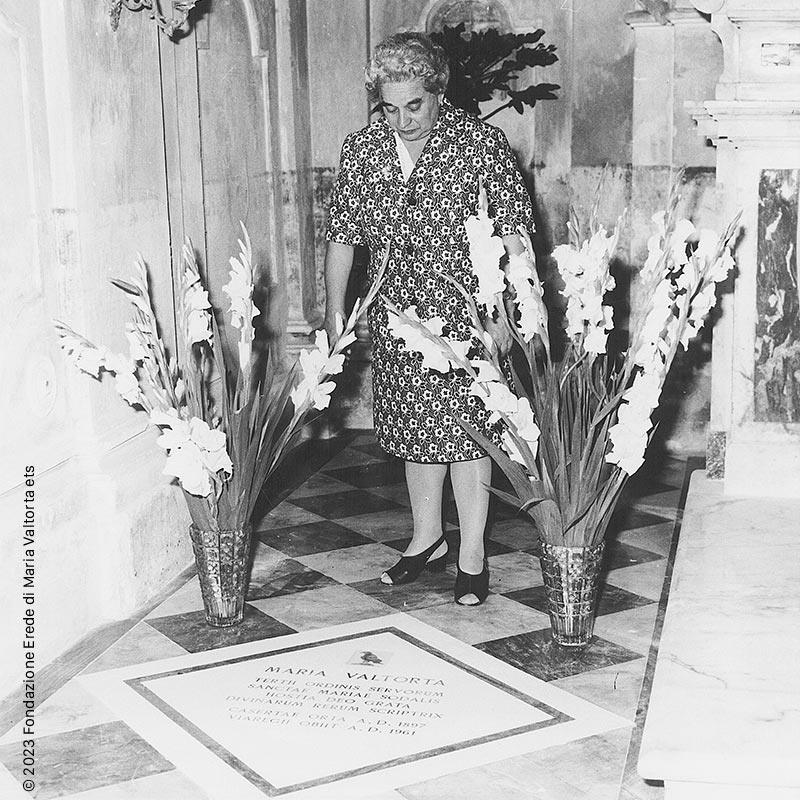

The fiftieth anniversary of this historical event will be remembered with a celebration of holy Mass in the Capitolo Chapel, in the Chiostro Grande of the Most Holy Announciation in Florence on July 2nd 2023 at 4.30 pm.
